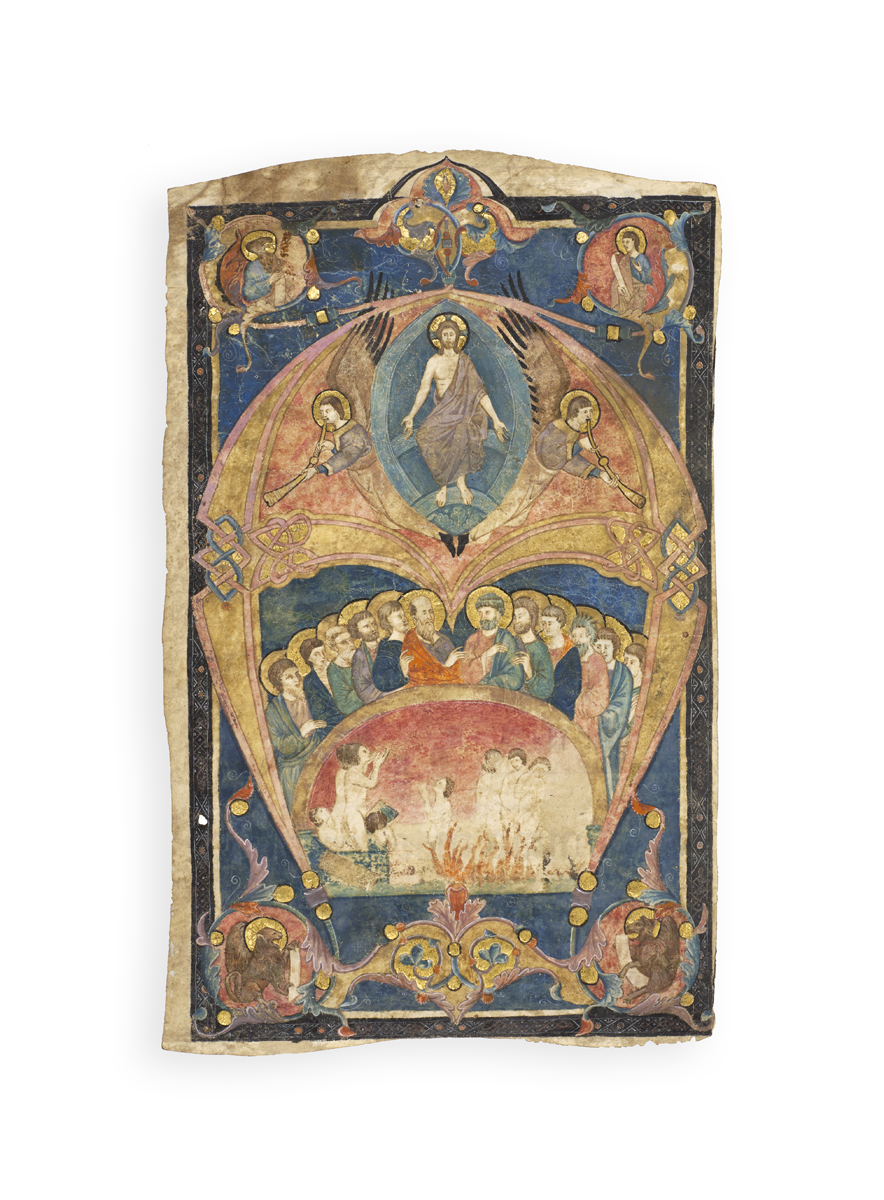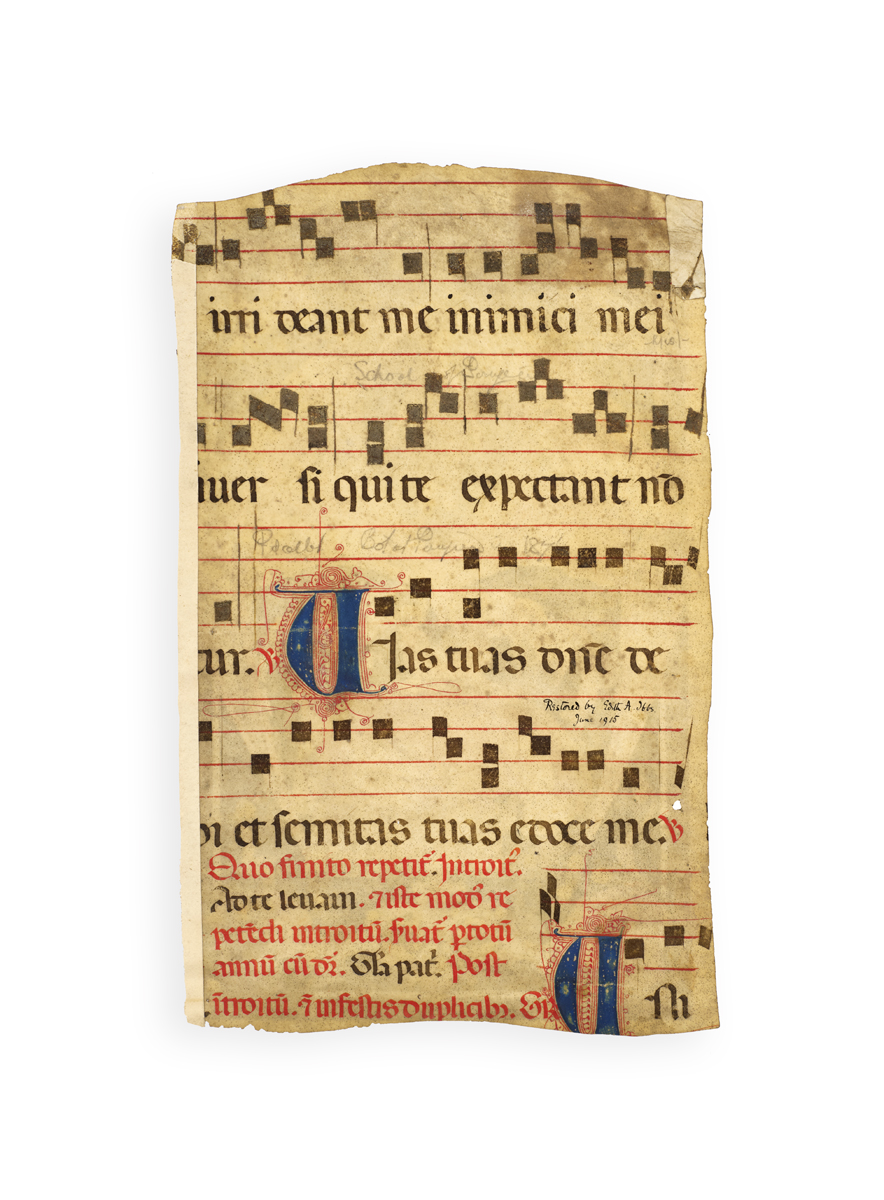

[GRADUAL.]
Vast historiated initial ‘A’ cut from a Gradual.
Italy (Umbria), end of thirteenth century.
Extremely large and elaborate initial ‘A’ (Ad te levavi animam meam), 310 x 183 mm, incorporating clusters of interlace and enclosing in the upper compartment the full-length figure of Christ within a blue mandorla supported by two angels blasting trumpets, in the lower compartment the twelve apostles, their haloes of alternating ochre and burnished gold, and, below them, the Last Judgement with, on the left, the dead rising from their tombs and, on the right, souls burning in Hell, the initial set within a large rectangle bordered in black and with leafy extensions enclosing, in the corners, the symbols of the four Evangelists, the whole painted in shades of blue, pink, lilac, ochre and orange and with burnished gold, the verso with five lines of music on a four-line red stave and of text in two sizes of a rounded gothic script in dark brown and red ink, two initials in blue with elaborate penwork in red; the initial evidently once quite rubbed and with careful but extensive retouching carried out in the early twentieth century (mostly to the blue and pink backgrounds and to the mandorla but also to the draperies and to the two Evangelist symbols at the foot of the initial), two small holes, some staining, remains of old paper hinge on verso.
A spectacular initial on the scale of a small panel painting. The verso includes the text ‘[neque] irrideant me inimici mei […] [un]iversi qui te expectant’ and the versicle ‘Vias tuas domine de[monstras]’, indicating that the initial would have introduced the introit ‘Ad te levavi animam meam’ (‘Unto thee I lift up my soul’) for the first Sunday in Advent (and thus the very first text of the liturgical year). As for the corresponding text for that day in the Antiphonal (‘Aspiciens a longe …’, ‘Seeing from afar, behold the power of God coming …’) the initial ‘A’ was often given lavish treatment by the illuminators of Italian choirbooks, and in both cases the iconography sometimes combined Christ in glory after the Ascension with the Last Judgment, as here. While the dead rising from their graves are sometimes depicted, our initial is unusual for its inclusion of tormented souls in Hell. The style may be compared to the oeuvres of the First Master of the Gubbio Choir Books and the Master of the Deruta-Salerno Missals. The decorated initials on the verso are characteristic of Umbrian illumination in the last quarter of the thirteenth century.
Provenance:
1. Old pencil inscription on verso ‘Bot [i.e. bought] at Perugia[?] 1876’ and certainly in England by 1915 when inscribed on the verso in black ink ‘Restored by Edith A. Ibbs June 1915’. Edith Ibbs (1862–1937) was an English illustrator, illuminator, and calligrapher. She is known to have illustrated two books for the London publishers Seeley & Co.: The Sacred Seasons: Readings for the Sundays and Holy Days of the Christian Year from the Writings of the Right Reverend Handley C.G. Moule, selected by ‘F.M.Y.’ (1907), and The Confessions of Saint Augustine (1909). She also designed printed illuminations for two books for Constable & Co.: Songs from the Plays of Shakespeare with illuminated initials and borders, and Sonnets by Shakespeare, with illuminated initials and borders by Edith Ibbs, both published in 1913.
2. Sotheby’s, ‘Important Western and Oriental Manuscripts and Miniatures’, 2 February 1960, lot 227, bought by Francis Edwards.
3. John Percival Love (1896–1974), Chairman of Francis Edwards; thence by descent.